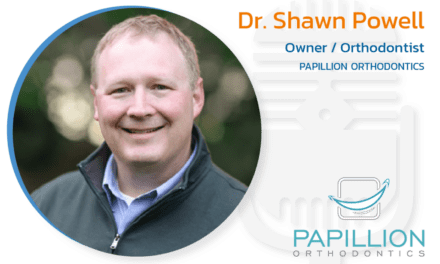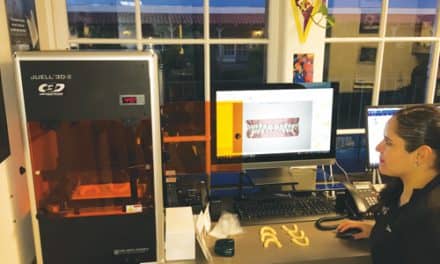No one orthodontic practice can be all things to all people. And as you pivot out of the pandemic, it’s time to make a choice and decide which orthodontic practice model best works for your career goals.
By Leon Klempner, DDS and Amy Epstein, MBA
Is the traditional neighborhood orthodontic practice model dying? Despite the pandemic and pressure from outside forces, many fee-for-service solo practices are thriving. Let’s take a look at the different models of delivery of orthodontic care and why they are successful.
Not too long ago, it was pretty much a one-way street. The only competition a solo fee-for-service orthodontic practice had was another local neighborhood orthodontic practice down the road. You relied on primary care and pediatric dental professional referrals and word-of-mouth referrals from your current happy patients.
Then disruption upended the orthodontic industry by way of economic forces and technology. Just like when streaming video services shook up the movie industry, the same has been done to the orthodontic specialty.
The Alphabet Soup
The alphabet soup of DSOs, OSOs, and DTCs created choices for both doctors and consumers that we never imagined before. The internet created opportunities for prospective new patients to do their own research instead of simply relying on the recommendation of their dentist for orthodontic treatment. Large corporations and group practices have streamlined the economics of orthodontics to the point where oral health is also a brand, not just a service. Plastic aligners have digitized the treatment process and brought a sexiness to getting your smile fixed. And direct-to-consumer companies are taking advantage of advances in clear aligner production to offer limited treatment orthodontics for people who just want their selfie and Zoom smiles fixed and deliver that service through the mail.
Communication and Delivery Rethink
The pandemic has also had an additional disruptive effect on the industry. It has forced orthodontists to rethink how they communicate with patients and how they deliver treatment. The pandemic has accelerated the advancement of teledentistry and communication and for many, these changes are here to stay. Many believe that the adoption of virtual communication between doctor and patient has been shortened by a decade or more.
Because of all this, orthodontists have options and choices as to how they want to run their practices in the future and prospective new patients also have options. What is becoming clear is that if you want to successfully compete in the future, you can no longer be all things to all people. Let’s look at a few models with bright futures.
The Models with Bright Futures
Below, I define the four different modes that a practice can take depending on your personal temperament, finances, goals, and level of commitment. There is zero judgement in the below models of orthodontic practices. Each one has its benefits and services a need in the marketplace.
The Managed Care Model
This is where an orthodontist signs up for as many insurance company and state aid plans as possible and they send the patients. It’s a high-volume business that gets patients in and out quickly. It’s effective in bringing in patients and does not require a ton of marketing. You essentially wait for the insurance companies to refer business to you. Of course, the flip side is that you are at the mercy of the insurance companies with fee controls, pre-authorizations, and scrutiny on the orthodontist regarding what service is eligible for payment, when and how much. Some treatment control is lost to the insurance company and aside from the patient and doctor, this third party is involved. The advantage to this model is that very little digital marketing is necessary.
The Corporate Model
One place a young orthodontist might cut her teeth (so to speak) in practice is at a corporate orthodontic office or a dental service organization (DSO). These corporate-run practices can sometimes specialize in higher volume, and often offer lower fee orthodontic services as well as offer patients affordability and convenience—trends we have seen traditional practices embrace over the years as well (see below).
For a young orthodontist, a corporate gig might be a great choice. DSOs are among the fastest-growing segments in dentistry. Debt-ridden residents can find an above market salary at a corporate-run orthodontic practice without the stress and headache of starting their own office or working to become partners in another solo practice. At People & Practice, we are seeing many young orthodontists work for a DSO for a few years, pay off some educational debt and then open their own practice.
While the upside is a comfortable place to land after dental school, there can be some of the same downsides at a DSO that people experience in any corporate environment. Bureaucracy makes it hard to be agile. Decisions cannot be made by the individual and are often run through a committee-like process. Marketing and communication are handed down from above. A loss of autonomy that comes from running a traditional practice is lost. Orthodontists can be the captain of their own ship at a solo or small group practice, whereas at a DSO they might be relegated to deckhand duty. Orthodontists lose the ability to create their own schedules, dictate pricing, as well as the tools and systems they feel most comfortable working with at a DSO.
Of course, on the other end of the spectrum, the corporate model can provide a nice landing place for retirement-aged orthodontists. Many older doctors will cash out of their practice but still might want to treat patients without the responsibility of ownership. The DSO model can offer these late-stage orthodontists a great way to end their careers.
The Traditional Neighborhood Practice
These practices are still the most prolific, however their market share is being slowly eroded away by the other models and direct-to-consumer orthodontics. If it goes unchanged this is the practice type that is most in jeopardy. These practices need to differentiate themselves in the marketplace through use of technology, marketing, and adjusting their fees and payment models. There is definitely a place for the neighborhood orthodontist in the future but not if they’re not willing to make some adjustments.
Over a career, the economic return on a solo practice almost always provides higher returns than any other modality. Traditional practices can be agile, have a smaller footprint, and can use digital marketing tools to bring in new patients. What changes would be advantageous? From the data we see from our clients, those practices that adapt to consumer centric desires are growing rapidly. For example, making the fee more affordable by lowering initial payments and extending payments beyond treatment time, marketing for the easier aligner cases at a lower fee with a lower lab overhead, using remote monitoring to provide patient convenience as well as office efficiencies to name a few. Feel free to contact me directly for more details.
The Boutique Practice
The boutique practice is one that is highly personalized and gives concierge service to patients. These practices generally have higher fees and lower volume with services that cater to their clientele. You are going to spend a lot of time with your patients who pay a premium for your services. Only a select number of orthodontists are going to survive in this model. While many orthodontists feel they provide this level of service, very few really do.
While direct-to-consumer orthodontics will not be taking over the world, they will take a part of the marketplace of patients who just want teeth straightened for either the lowest fee or the highest convenience. That leaves a lot of room for the rest of us and any one of the above business models is viable in the future of orthodontics for solo and small group practice owners. The key is to know what business you are in.
Whichever model you choose, it’s never been a better time to be an orthodontist. The key is understanding the marketplace and differentiating your practice. OP
Leon Klempner, DDS and Amy Epstein, MBA are co-founders of People & Practice, a digital marketing consultancy exclusively for orthodontists. They also host The Survival Guide for Orthodontists, a podcast dedicated to making you the authority in orthodontics to prospective new patients in your community. People & Practice builds trust in your practice online to help you get new patients in a digital era by convincing them (before even meeting you) that you’re the practice to choose. For more information or a free marketing analysis call 888-866-DOCS or email [email protected].










